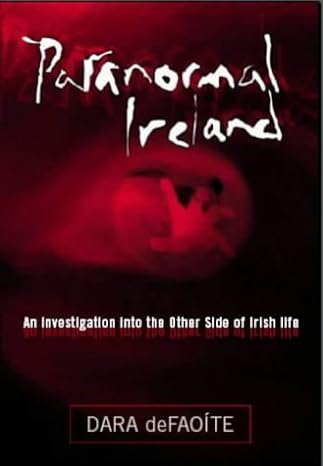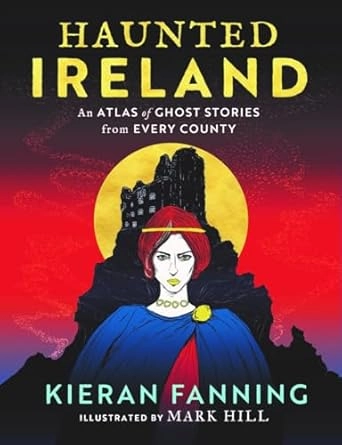Dobhar-chú
Cryptozoology
Friday 30th, July 2021
3 minute read.
The dobhar-chú or otherwise known as the King Otter is a creature in Irish folklore that is said to be half dog and half fish. Glenade Lake in Glenade Valley county Leitrim, Ireland, is reported to be one location where the dobhar-chú lurks beneath the lake's surface.
One of the first reported mentionings of the King Otter was in 1684 when a reference was made in 'A Description of West Connacht' by Roderick O'Faherty.
Probably the most famous case comes from the nearby Conwell cemetery, where there is a headstone which marks the resting place of Grainne Con (sometimes referred to as Grace Connolly) wife of Ter Mac Loghlin (Terence Mc Gloighlin), who in 1722, it's been reported that either Grace was bathing in the waters close to the shoreline or was said to be washing her clothes by the lakes edge. Regardless of how Grace came to be in or at the water's edge she would become a victim of the dobhar-chú.
When Grace didn't return home that evening her husband went out to the lake to find her and happened across her body with the sleeping dobhar-chú next to her, in a fit of anger Ter slayed the dobhar-chú with his sword, as the dobhar-chú took its last breath it let of an ear splitting scream which caused it mate to rise from the lakes and gave chase to Ter who had made it back to his horse and started to ride away to save his life.
Ter rode for hours as the persistent dobhar-chú continued to give chase. Ter stopped in the township of Cashelgarron where he talked with a local blacksmith who told Ter to stand his horse on high, clear ground and when the dobhar-chú catches up the creature would thrust it's head through the body of the horse, at this exact moment Ter was to cut off the dobhar-chú's head. Ter did as he was instructed and avenged his wife's death.
There was another documented report that appeared in an 1896 edition of The Journal of Royal Society of Antiquaries of Ireland. It was reported by a reader of the journal named Ms. Walkington, the letter stated that a creature "half-wolfdog, half-fish" was sighted.
More recently in 2000 there was a reported sighting of the dobhar-chú by Sean Corcoran an Irish artist. Sean is said to have been out with his wife on Omey Island in Connemara when he said, "The creature swam the width of the lake from west to east in what seemed like a matter of seconds", following this its been reported that the creature gave "the most haunting screech" Sean had ever heard before the creature disappeared into the water.
One of the first reported mentionings of the King Otter was in 1684 when a reference was made in 'A Description of West Connacht' by Roderick O'Faherty.
Probably the most famous case comes from the nearby Conwell cemetery, where there is a headstone which marks the resting place of Grainne Con (sometimes referred to as Grace Connolly) wife of Ter Mac Loghlin (Terence Mc Gloighlin), who in 1722, it's been reported that either Grace was bathing in the waters close to the shoreline or was said to be washing her clothes by the lakes edge. Regardless of how Grace came to be in or at the water's edge she would become a victim of the dobhar-chú.
When Grace didn't return home that evening her husband went out to the lake to find her and happened across her body with the sleeping dobhar-chú next to her, in a fit of anger Ter slayed the dobhar-chú with his sword, as the dobhar-chú took its last breath it let of an ear splitting scream which caused it mate to rise from the lakes and gave chase to Ter who had made it back to his horse and started to ride away to save his life.
Ter rode for hours as the persistent dobhar-chú continued to give chase. Ter stopped in the township of Cashelgarron where he talked with a local blacksmith who told Ter to stand his horse on high, clear ground and when the dobhar-chú catches up the creature would thrust it's head through the body of the horse, at this exact moment Ter was to cut off the dobhar-chú's head. Ter did as he was instructed and avenged his wife's death.
There was another documented report that appeared in an 1896 edition of The Journal of Royal Society of Antiquaries of Ireland. It was reported by a reader of the journal named Ms. Walkington, the letter stated that a creature "half-wolfdog, half-fish" was sighted.
More recently in 2000 there was a reported sighting of the dobhar-chú by Sean Corcoran an Irish artist. Sean is said to have been out with his wife on Omey Island in Connemara when he said, "The creature swam the width of the lake from west to east in what seemed like a matter of seconds", following this its been reported that the creature gave "the most haunting screech" Sean had ever heard before the creature disappeared into the water.



